SWIFT Alliance Gateway Adapter OTD Features
The SWIFT AG Adapter includes the SAGOutboundadapter Object Type Definition.
The SAGOutboundadapter OTD structure is organized into five sections: Configuration, Constants, Primitives, RemoteApis (Remote APIs), and Services.
Figure 1–23 SAGOutboundadapter OTD
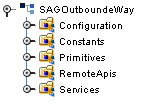
The figure above shows the SAGOutbound adapter OTD as displayed in the Collaboration Editor.
Configuration Node
The Configuration node directly corresponds to the adapter Connectivity Map and Environment Configuration properties. The OTD Configuration node offers dynamic configuration (configuration on the fly). Dynamic configuration allows you to edit the configuration, based on your Collaboration’s Business Rule logic, from the Java Collaboration Editor, dynamically changing a parameter without shutting down your Project.
As displayed in the figure below, the Configuration section of the OTD is a Java representation of the SWIFT AG Adapter Configuration file.. The Configuration section with the expanded FileActClient node and sub-nodes is displayed in the figure below.
Figure 1–24 SAGOutboundadapter OTD - Configuration Node
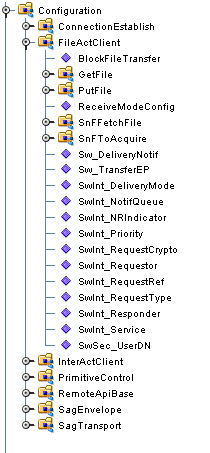
Constants Node
The Constants node provides a convenient way to select SNL related constants. Constants are literal values that have a name (see the figure below).
OTD Constants are presented in the Collaboration Editor so that you can simply drag and drop the Constant to a Business Rule, avoiding possible case or spelling errors.
Figure 1–25 SAGOutboundadapter OTD - Constants Node
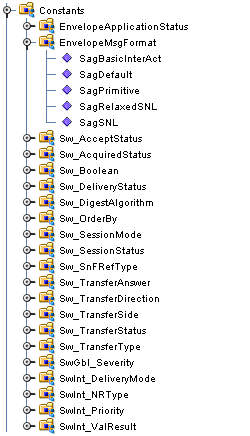
Primitives Node
The Primitives node provides the full set of SNL Primitives as defined by the SNL specification. For information regarding any of the SNL Primitives, refer to the SWIFTAlliance Gateway Documentation. The SNL Primitives node and sub-nodes are displayed in the figure below.
Advanced users can construct their own Primitives and send the Primitive using the SWIFT AG Adapter API, directly communicating with SWIFTNet. Once they get a response to their request, they can parse the response based on their Primitives. The parser is provide in the OTDs Primitives section. The response can be dragged to the appropriate node to parse the response.
Figure 1–26 SAGOutboundadapter OTD - Primitives Node

Remote APIs Node
The SAGOutboundadapter OTD’s RemoteApis node exposes the SWIFT Remote API’s client APIs. Just as the Primitives section provide a “message structure”, the RemoteApis section provides a “communication function structure”. The Remote APIs allow you to perform special lower level communication functions.
Figure 1–27 SAGOutboundadapter OTD - Remote APIs Node
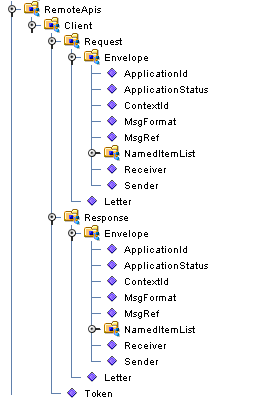
Service Node
The Service section of the OTD allows you to perform higher level message and communication functions. Right-click the FileActClient or InterActClient node in the Collaboration to view the available methods to perform your business functions (exchange message, get file, put file, queue access, and so forth).
Figure 1–28 SAGOutboundadapter OTD - Services Node
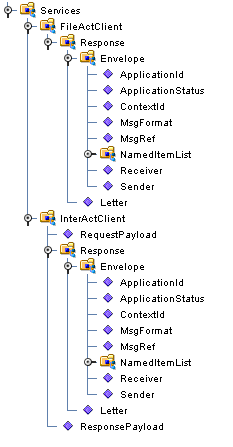
See the sample Projects for an example of how this OTD is used to create your business logic. The prjSAGCert Project demonstrates several business functions with one Collaboration.
- © 2010, Oracle Corporation and/or its affiliates
